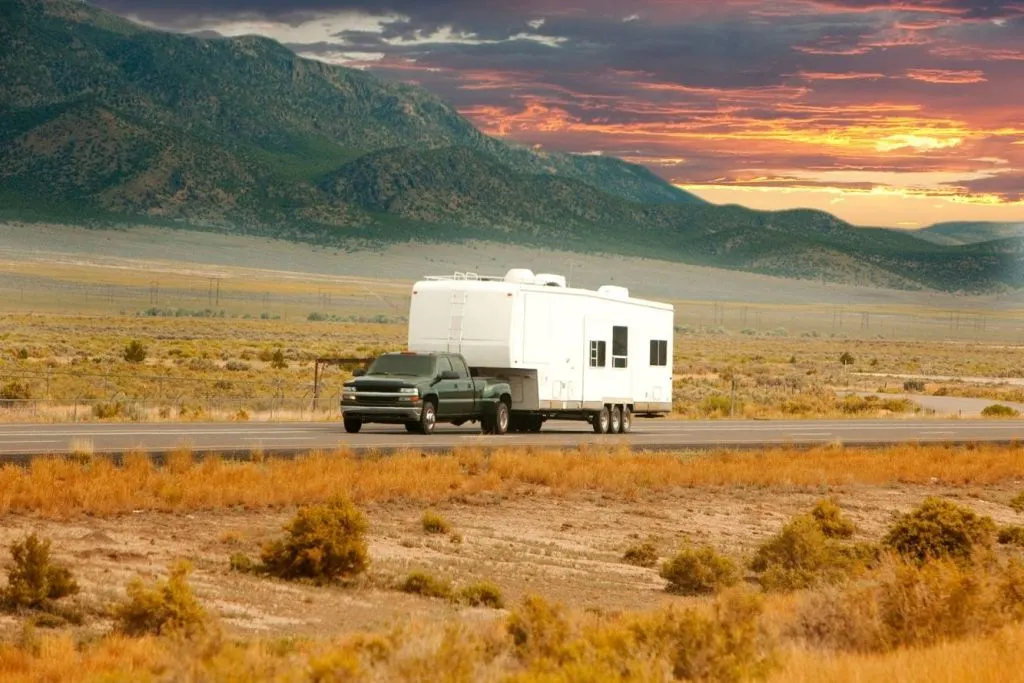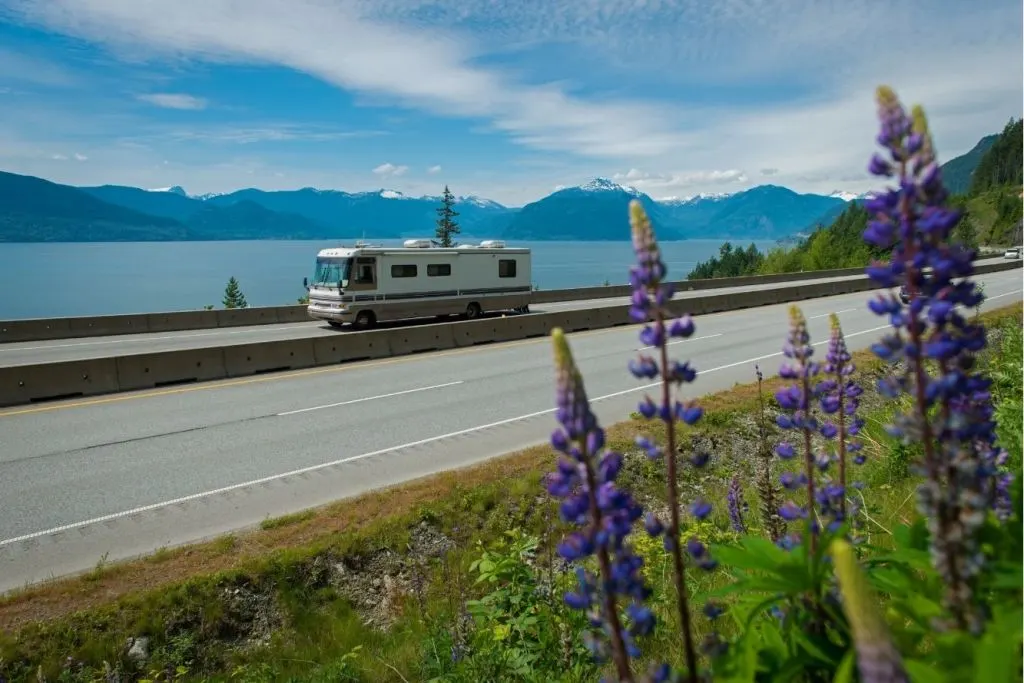RV Driver Caught in Crosswinds, “Thought We Were Going to Die” (WITH VIDEO)
Windy RV travel days are enough to strike fear into the hearts of the most experienced RVers.
Wind isn’t fun to drive a large vehicle in. It’s exhausting, scary, and can be downright dangerous.
An RVing Reddit user got a taste of the danger themselves when their Class A motorhome was caught in a crosswind while driving through Nevada.
We’ve got the story here with some tips for driving your RV on windy days.

RV Caught In Crosswinds Posted to Reddit
Reddit user jmd27612 shared a terrifying video from the dashcam of their RV in late May, 2021. While driving along a stretch of I-15 from Nevada into Southern California, a crosswind almost blew their Class A diesel pusher RV off of the road.
According to the post author, they were already driving at reduced speeds of 40 miles per hour in a 70 miles per hour zone.
In the video, you can see a semi-trailer ahead of the RV and a bit of dust blow across the road before the RV veers onto the shoulder of the interstate. Luckily no one was harmed and the drivers were able to get the RV back on the road before going too far off of the shoulder.
Pro Tip: How Windy is Too Windy to Drive Your RV? Learn more here.
What is a Crosswind?
A crosswind is a wind blowing across one’s direction of travel. For road travelers, a crosswind is a wind that blows perpendicularly across the highway.
Crosswinds can be large gusts that blow in suddenly with no warning, which can make them particularly dangerous for high-profile vehicles.
Areas prone to crosswinds include overpasses, bridges, and swaths of wide-open land like deserts and fields. Although certain areas are more prone to crosswinds than others, these gusts can happen anywhere.
Why Crosswinds Are So Dangerous for RV Travelers
RVs and camper trailers are high-profile vehicles that are particularly susceptible to strong crosswinds. The large, flat side of an RV acts as a wall or a sail that can push you off the road when you get broadsided by a strong crosswind.
Crosswinds can be especially dangerous when they take RVers off-guard. As you can see in the video posted to Reddit, a crosswind has the ability to blow you completely off the road.
If the driver hadn’t been paying attention, it could have been much worse!
If a driver over-corrects when hit with a crosswind, the results can be catastrophic. Over-correcting after being hit by a crosswind can cause you to lose control of your RV altogether, which can cause you to go further off the road or worse: flip your RV.

Some Tips in The Reddit Comments Were Actually Helpful
As with all things on the internet, the comments on this Reddit video run the gamut from criticism to astonishment to tips. And some tips in the comments were actually pretty helpful!
The poster included additional clarification to some of the commenters, including stating that they were driving 40 mph on a 70mph stretch of road. This just proves that even slowing down doesn’t fully protect you from a strong gust of wind!
User feckinghound commented: “Do not brake, take your foot off the accelerator. Don’t oversteer by trying to quickly steer back onto the road.”
Reddit user ttDilbert said “Slowing down doesn’t reduce the speed of the crosswind if it’s perpendicular to the road. It’s a good idea, but not 100% effective.”
Tips for Driving an RV in Windy Conditions
While driving slower in windy conditions will help some, it won’t always save you in the event of a strong crosswind or unexpected wind gust.
It’s best to avoid interstate travel on super windy days altogether if you can, but if you can’t, here are some tips.

Keep Both Hands on the Wheel
You should always keep both hands on the wheel, but it’s more important than ever when driving in windy conditions. You never know when a gust of wind will come in, so be ready at all times.
Drive Slow
Drive slower than usual to get to your destination if driving your RV on windy days. It doesn’t matter if you have a huge line of cars behind you, your safety is the number one priority! Driving slow won’t eliminate the possibility of being pushed by a crosswind, but it will help prevent it from being a bigger problem.
Don’t Let Your Guard Down
Don’t let your guard down, even for a minute! Wind comes and goes on windy days but crosswinds can come in at any time. There is no warning for a crosswind, you can’t see it or hear it. Always keep your guard up when driving an RV or trailer on windy days or in areas prone to gusty winds.
If Pushed By Wind, Do This
If you do get pushed off the road by a crosswind, keep your cool! It’s almost reflexive to panic and try to steer back onto the road or slam on the brakes, but doing either of these things could spell disaster.
If you are pushed by a crosswind, do your best to keep control of your vehicle without over-correcting. If you’re pushed onto the shoulder, just try to keep your RV straight until you’ve regained enough control to slowly and safely steer back onto the road.
Also, don’t slam on your brakes. If you get pushed by a crosswind, let your foot off of the gas and coast until you regain control.
Use caution and use common sense for safe RV travels on windy days!
Discover the Best Free Camping Across the USA
To be honest with you, we hate paying for camping. There are so many free campsites in America (with complete privacy).
You should give it a try!
As a matter of fact, these free campsites are yours. Every time you pay federal taxes, you’re contributing to these lands.
Become a FREE CAMPING INSIDER and join the 100,000 campers who love to score the best site!
We’ll send you the 50 Best Free Campsites in the USA (one per state). Access the list by submitting your email below:
I have been impressed by the built-in Crosswind [response] program in our Sprinter Van.
Annoying, but useful: when the inertial sensors detect movement discordant with the steering direction, the ABS system will drag the upwind rear brake, and bring the van “back around” – at least some. SWB high roof probably makes this problem worse. No disasters.